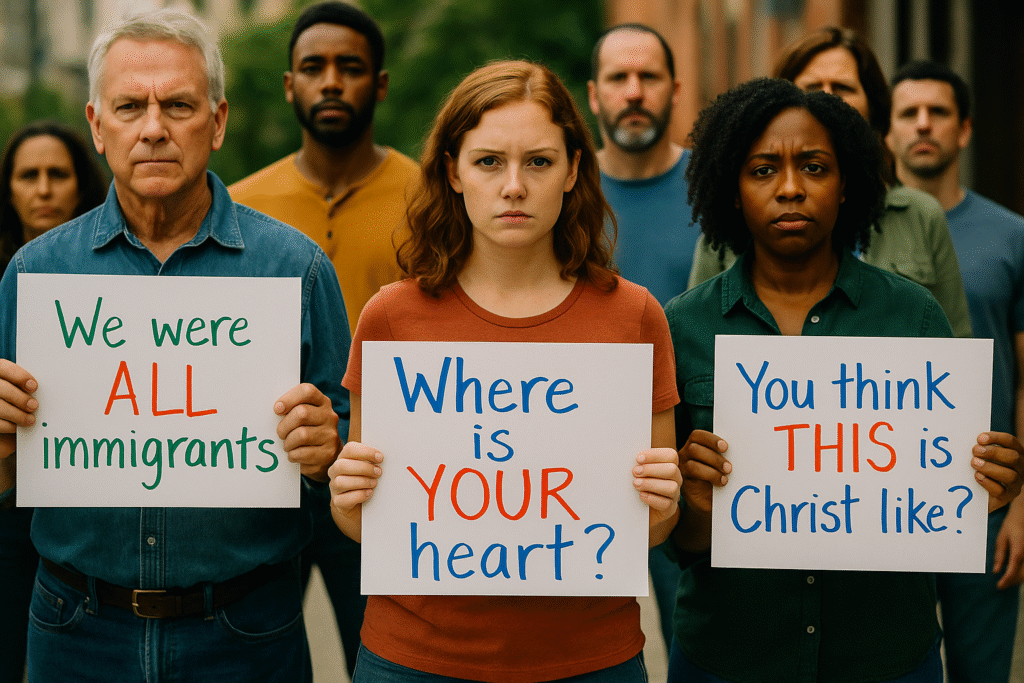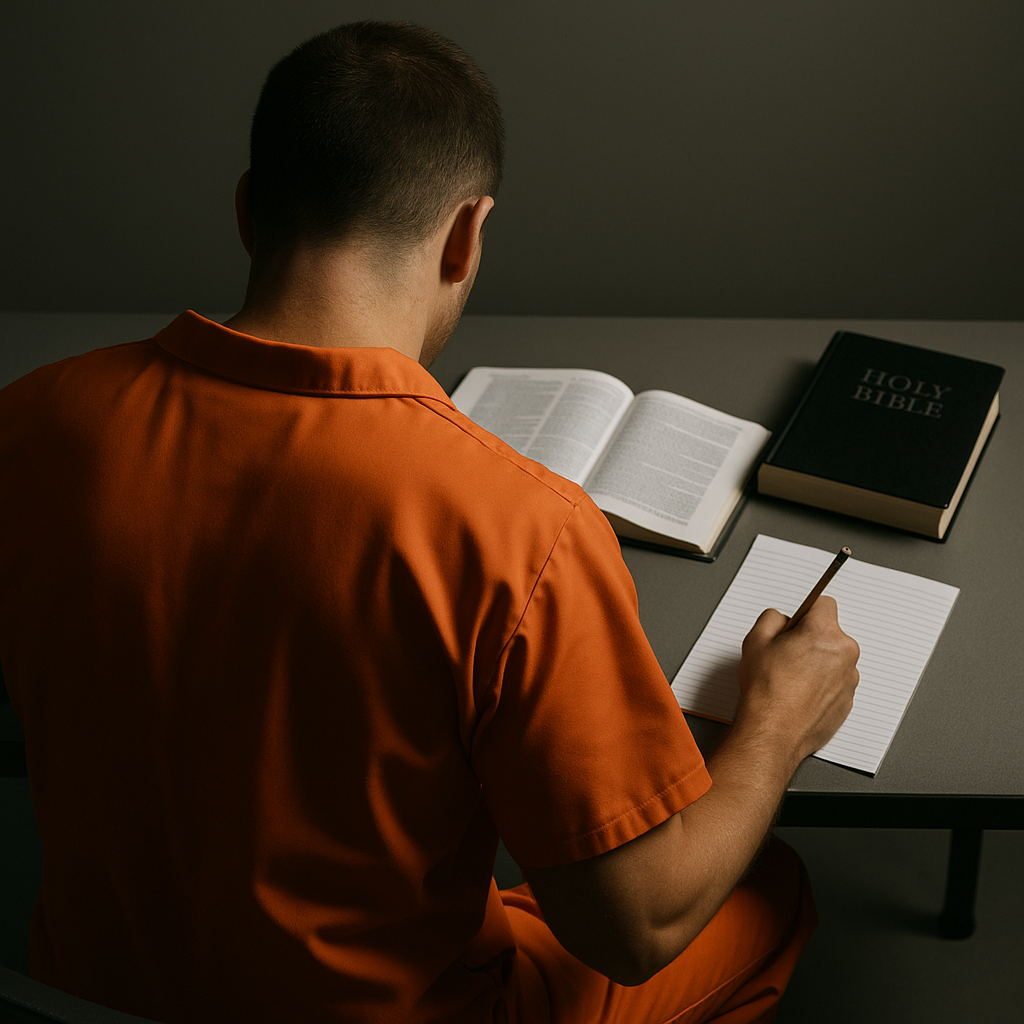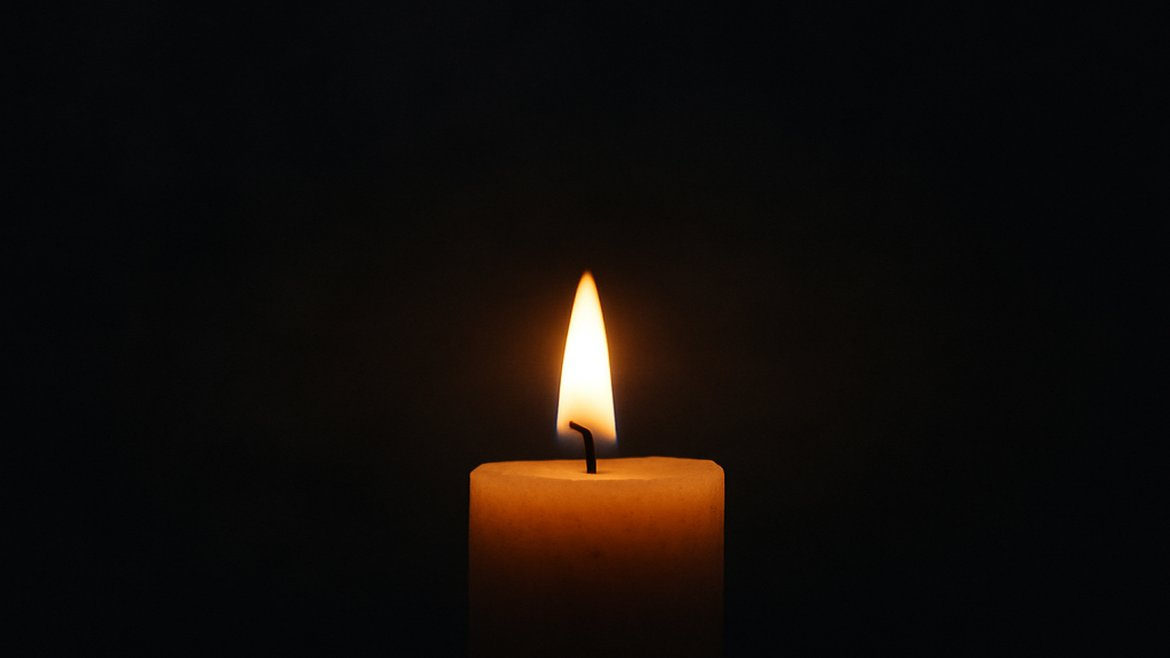Recently, I’ve found myself grappling with a difficult and essential question:
Have some people genuinely lost their humanity, or are they simply evil?
When I observe the cruelty, indifference, and venom that flow so readily from one person to another, I can’t help but feel unsettled. How do people come to treat others—especially the vulnerable—in such a harsh way? Are we truly seeing the face of evil, or are these simply deeply wounded individuals who have lost their way?
Is evil real — or is it simply the tragic result of fear, trauma, and disconnection left unchecked?
Different Perspectives on Evil

People have understood and defined evil in many different ways, shaped by their backgrounds and beliefs. Some view it as a literal spiritual force—a presence beyond us, perhaps even a being—that opposes good. Others see it as a psychological phenomenon, something humans create when they feel hurt, fearful, or are struggling to survive. I’ve also heard it described as a form of spiritual amnesia—a loss of awareness of who we truly are and what we are connected to.
From a religious or biblical viewpoint, evil is often personified. In Christianity, for instance, Satan is portrayed as a deceiver—an entity whose primary aim is to distance us from love, from God, and from truth. This reflects the concept of spiritual warfare, a battle not only between individuals but between the forces of light and darkness vying for the soul.
In psychological terms, I now think of evil as a chain reaction of pain. When individuals experience trauma, numbness, or desperation, they may commit acts that seem inhuman. Often, they have been taught or conditioned to see their cruelty as normal—or even essential. How incredibly sad…
I’ve been reflecting on a symbolic, soul-centered perspective: Earth as a place of learning, and the role of darkness exists not to defeat us, but to give us something to rise through. In this way of seeing, evil isn’t always a force to be destroyed, but a contrast that reveals the light.
Maybe it’s the contrast itself—between love and cruelty, empathy and indifference—that sharpens our awareness and deepens our learning. Without it, I’m not sure we’d even recognize what the light truly is.
That thought brings to mind one of my favorite prayers—the Prayer of St. Francis of Assisi—which I’ll include at the end. There’s something in its language that reaches right into the better parts of who we are. It doesn’t speak in high-and-holy terms, but in everyday opposites: hatred and love, injury and pardon, despair and hope. It reminds me that our humanity is often revealed not in perfection, but in how we respond to the contrasts life throws at us. Especially when the world feels heavy, divided, or dark.
But even with all these ways of understanding evil—spiritual, psychological, symbolic—it’s still not always so clear-cut. Think about the strange cases where two children grow up in the same home, same parents, same school—and one becomes a lawyer, while the other becomes a serial killer. What’s up with that? It really makes me wonder if something more subtle is at play—maybe it’s temperament, maybe soul contracts, maybe even karma—or perhaps the influence of the devil. I don’t know—but it definitely complicates things.
A Tangle of Compassion and Accountability
I’ve been mulling this over a lot lately, and I doubt I’ll ever have a perfect answer. But I keep coming back to this idea that maybe no one is born evil. I know that might sound a little idealistic—after all, I’ve been accused more than once of wearing rose-colored glasses — but part of me still believes most people start out good—or at least neutral—and then something happens, maybe one thing or a whole lot of somethings.
But then I see the news or hear about something horrible happening and I feel my heart seize. I think, “How could someone do that?” In that moment, you can see the perpetrator as soulless. Evil incarnate. It feels as if they’ve crossed a line no one can return from..
And yet—I still wonder. Is the soul really lost? Or just buried or overtaken? Have they shut it out completely, or are they just unreachable in this moment?
There’s a mountain of evidence that many who do harm were first harmed themselves. Abused. Silenced. Abandoned. Twisted up in fear. Think of the profiles we’ve all read—serial killers beaten, locked in closets, terrorized as kids. The jails are filled with human beings who have been broken—broken so terribly they have lashed out in the most unthinkable ways. And somewhere along the way, they were dehumanized themselves—so it became easier to dehumanize everyone else. They forget who they are, and they forget that others are human, too.
Can we ever bring ourselves to see them as human and suffering from their past and/or present wounds? The victimizer was once a victim. So going back to the concept of evil, where would this thinking fit in?
And that’s what I keep circling back to—this tension between compassion and accountability, between trying to understand and needing to stay grounded in reality.
Can People Come Back from Darkness?
I keep asking myself which “people” I’m talking about. Am I picturing the man in an orange jumpsuit who finally sobs over what he’s done? Or am I thinking of the suit‑and‑tie official who signs a deportation order and sleeps like a baby that night? The first is literally behind bars; the second is protected by a badge and a bureaucracy—yet both can feel miles away from their own humanity.
1. The ones society has already locked up
The folks we call “criminals” are often drowning in layers of trauma. They can stay in a fog for years—sometimes a lifetime—especially when every corner of their environment says: You are nothing more than your worst act. Still, there are plenty of real‑life examples of small but genuine turnarounds: an inmate grinding through classes to earn a GED, another finding purpose by tutoring younger prisoners, and men on death row who discover faith—accepting their sentence as a kind of penance for the horrors they committed while doing what they can to make amends in their final days. Little acts, maybe—but they remind me the heart can remember who it is, even after years of forgetting. I also believe that some people truly seem evil through and through and cannot ever be trusted again.
2. The ones directing the cruelty from cushy desks
Then there are policymakers and enforcers who tear families apart in the name of “security” — albeit a false sense of security when they’re focused on yanking people out of the farms, nursing‑home wards, and restaurant kitchens, the very jobs few others are lining up to do. Their armour is ideological—talk‑radio sound bites, spreadsheets, and a chain of command, all in service of a leader they treat almost like a golden idol—something to obey even when it bends (or breaks) the very rule of law they claim to protect. Do they ever crack? I’m honestly not sure. Some seem welded to the system; others resign quietly, haunted by what they’ve signed off on. Maybe their awakening looks different—more like a slow moral itch that won’t go away.
Where my hope fits (and where it falters)
So, can either group come back from the dark? I want to say yes—but the timeline is messy. For some, it’s a sharp jolt: a loss that rips the armour off. For others, it’s a stranger’s kindness, a song on the radio, or a flash of memory—Oh right, I used to feel things. And yes, a few cling to the fog like a security blanket. That’s the part that breaks my heart.
I guess my stance lands here: I’ll keep holding space just in case—lighting whatever candle I can. Some souls will step toward it, some won’t, but the light still matters.
What might it actually take?

Sometimes I wonder if it’s going to take more than candles and quiet hope. Will it be collective prayer circles, non‑stop protests, or heaven forbid another civil war of conscience before systems budge? Maybe the answer changes depending on which group we’re talking about.
For the incarcerated it might look like practical mercy: education programs, vocational training, trauma‑informed counseling—anything that helps someone serving life rebuild a sense of worth. People in this position may be longing for the simple dignity of being seen, being heard, being understood. To feel human again. To believe they are capable of growth—not to erase the past, but to show that they are more than the worst thing they’ve ever done. Even if they’ll never breathe free air again, they can still evolve into someone who reflects, contributes, and brings meaning to others in ways that weren’t possible before. I understand why some may feel that offering anything to those who took a life is unjust—but anger and retribution don’t heal. It calcifies. We can’t go back, and we can’t undo what’s been done. But we can allow space for transformation. For everyone. Because whether or not we speak in religious terms, I still come back to something simple and steady—that we are all human. Some would say we are all God’s children, made in His image. That doesn’t mean we excuse what people have done. But it does mean we stop pretending some lives are beyond redemption while others are worth saving.

For the suited decision‑makers it could be relentless public pressure, iron‑clad legal checks, and a culture that stops idolizing cruelty dressed up as “toughness.”
For the wider electorate that voted these policies into power, it may require collective soul-searching: listening to the families affected, having their own families or friends affected, recognising how fear was marketed to them, and, hopefully, finding the courage and empathy they may not yet possess. Because in their current state, I’m not sure they do. Still, they deserve compassion too. Maybe they truly don’t know what they’re doing. Maybe they’re blind—or so I’d like to believe.
I’m not sure which lever finally moves the boulder, but I suspect it’s all of them working in concert—prayer softening hearts, protesting voices being heard, and day‑to‑day acts of humanization giving people an exit ramp from the fog.
What It Means to Hold the Light Anyway
I may not be able to change laws or reach into the hearts of people I’ll never meet, but I can hold the light. I can keep loving in a world that seems to have forgotten how. I can keep praying for the lost, sending love to the disconnected, speaking truth even when it feels like no one is listening.
Because even if I never see the impact, I believe that somewhere—in some unseen way—my intention adds something to the fabric of this world.
And maybe that’s what we’re really here to do.
To remember.
To choose love again.
To keep the candle burning until someone, somewhere, awakens from a fog they didn’t know they were in.
Thank you for walking this reflection with me. If this spoke to you, feel free to share your thoughts below. Let’s keep this conversation open, honest, and human.
Peace begins within — if it’s to be, it starts with me.
